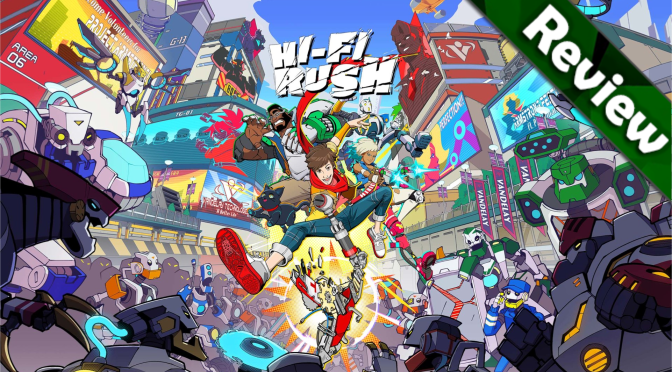So, Hi-Fi Rush just shadow dropped out of nowhere, with little to no marketing behind it. It just kind of released. Developed by Tango Gameworks the studio behind The Evil Within, The Evil Within 2 and Ghostwire Tokyo, comes this surprise. Is it worth it? Well, I’ve finished the campaign, and then some, which took me around 13 hours and here are my thoughts.
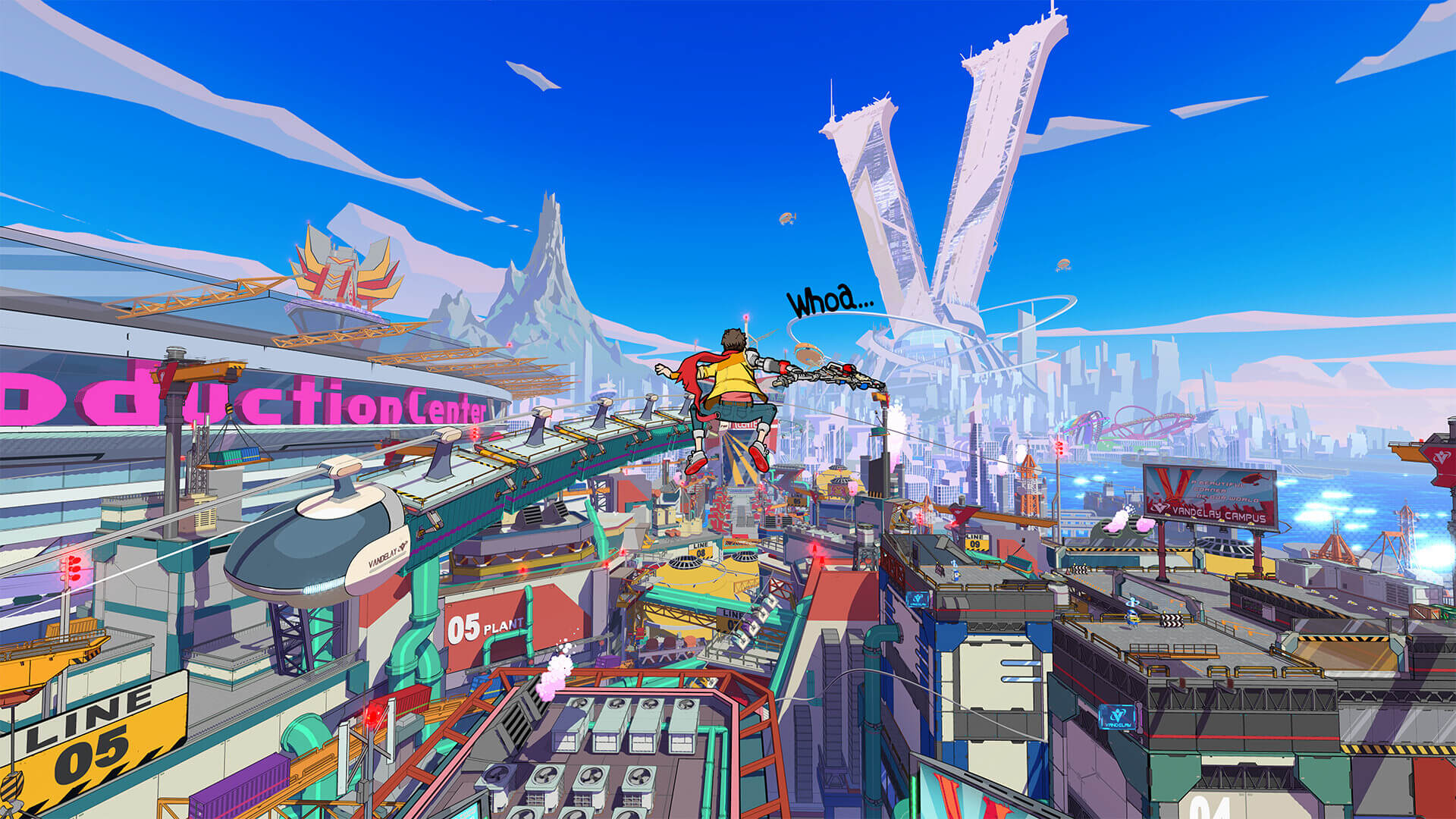
Story
As usual, I’m not going to spoil anything regarding the story, but in a nutshell, it revolves around Chai; a wanna be rockstar who during cybernetic surgery at a corporation called Vandelay, accidentally gets his music player stuck in his chest, and thus can feel the rhythm of the world. Needless to say, you soon find out that something is afoot, and that Vandelay has sinister plans. As such, you are thrown into a quest to get to the bottom of it. During your adventure, you’ll also band together with a bunch of interesting characters to fight against the corporation.
The back-and-forth banter of the characters can be funny, but some of the humor may not be to everyone’s taste. There are some twists along the way, and while it’s not the most original premise, the animations are excellent, the music and voice acting are done very well and it held my interest all the way through to the end.
Visuals and Audio
Visually the game is presented in a great cartoonish style. The entire world pulses to the beat of the music which is a nice touch. There are a number of tracks that thump along as you play, most are original tracks, but there are a few licensed tracks added in as well in some specific scenarios. All in all, it looks and sounds great, and the developers have done a fantastic job here.
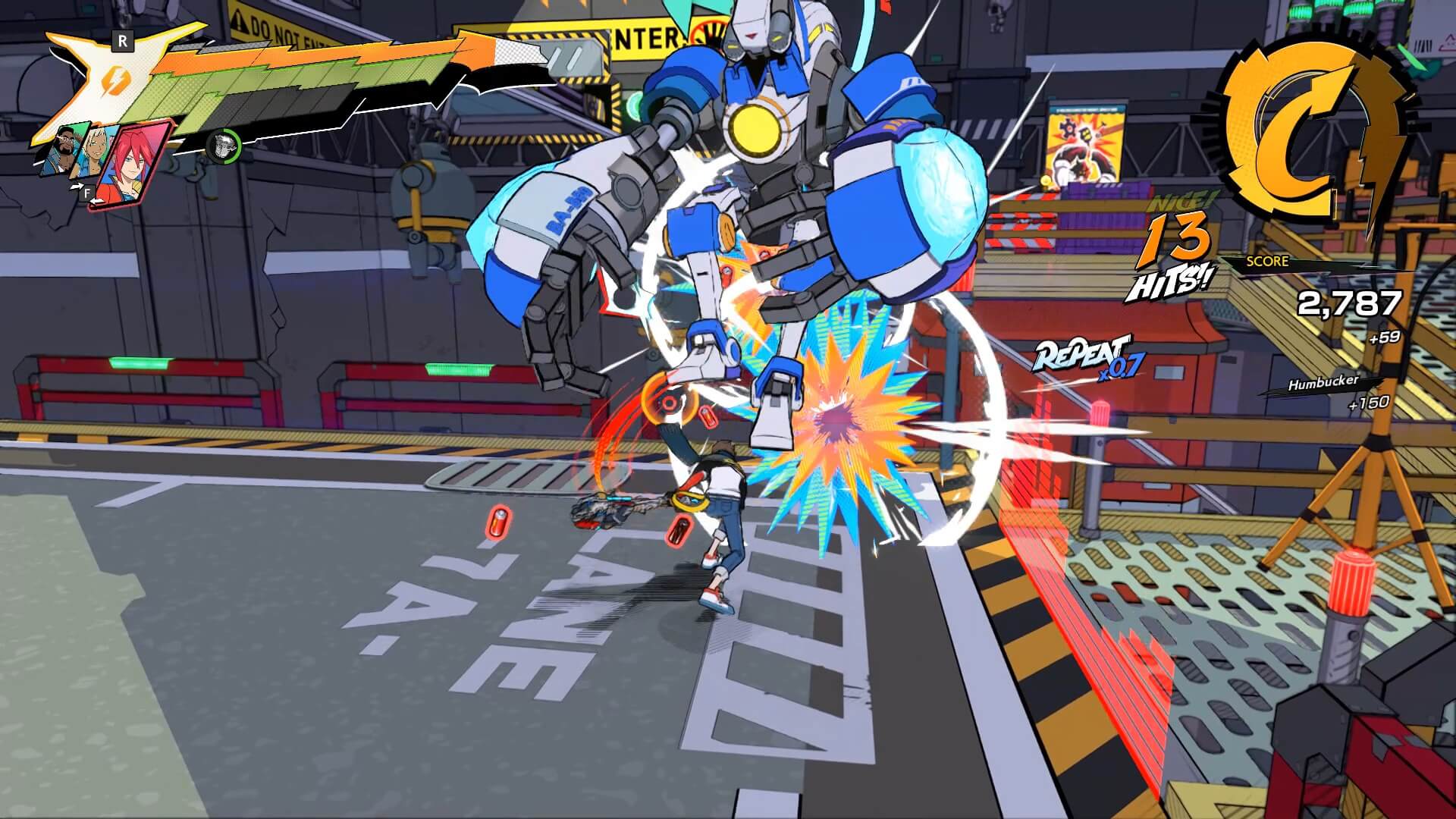
Gameplay
Hi-Fi Rush is a third-person action brawler mixed with a rhythm game. Every movement in the game is timed to the beat and, naturally, this includes the combat as well. There is a light attack, a heavy attack, a dodge, as well as a grapple and parry that you’ll eventually unlock. You’ll be combining these attacks together to form combos. While you only start with a few, you will eventually be able to purchase many more with the gears you find throughout the game.
All the attacks are synced to the beat regardless of when you press the buttons, but hitting on the beat adds bonus damage. Dodging on the beat allows you to dodge 3 times in a row as opposed to only once for example. Parrying on the beat is required otherwise you take damage. Of course there is a margin for error, but perfect timing is rewarded.
There is also a Reverb Bar (Read, special attack meter) that fills up in combat which will allow you to unleash special abilities. There are several special abilities that can be purchased, but only 2 can be equipped at any given time. Later in the game, you’ll also unlock slots to put in combat mods that enhance a variety of things, for example getting more health from pickups, reduced cooldown timers for your companion summons, quicker build-up of a combo meter, etc. The amount of available slots starts out at one, but can eventually be maxed out at 5.
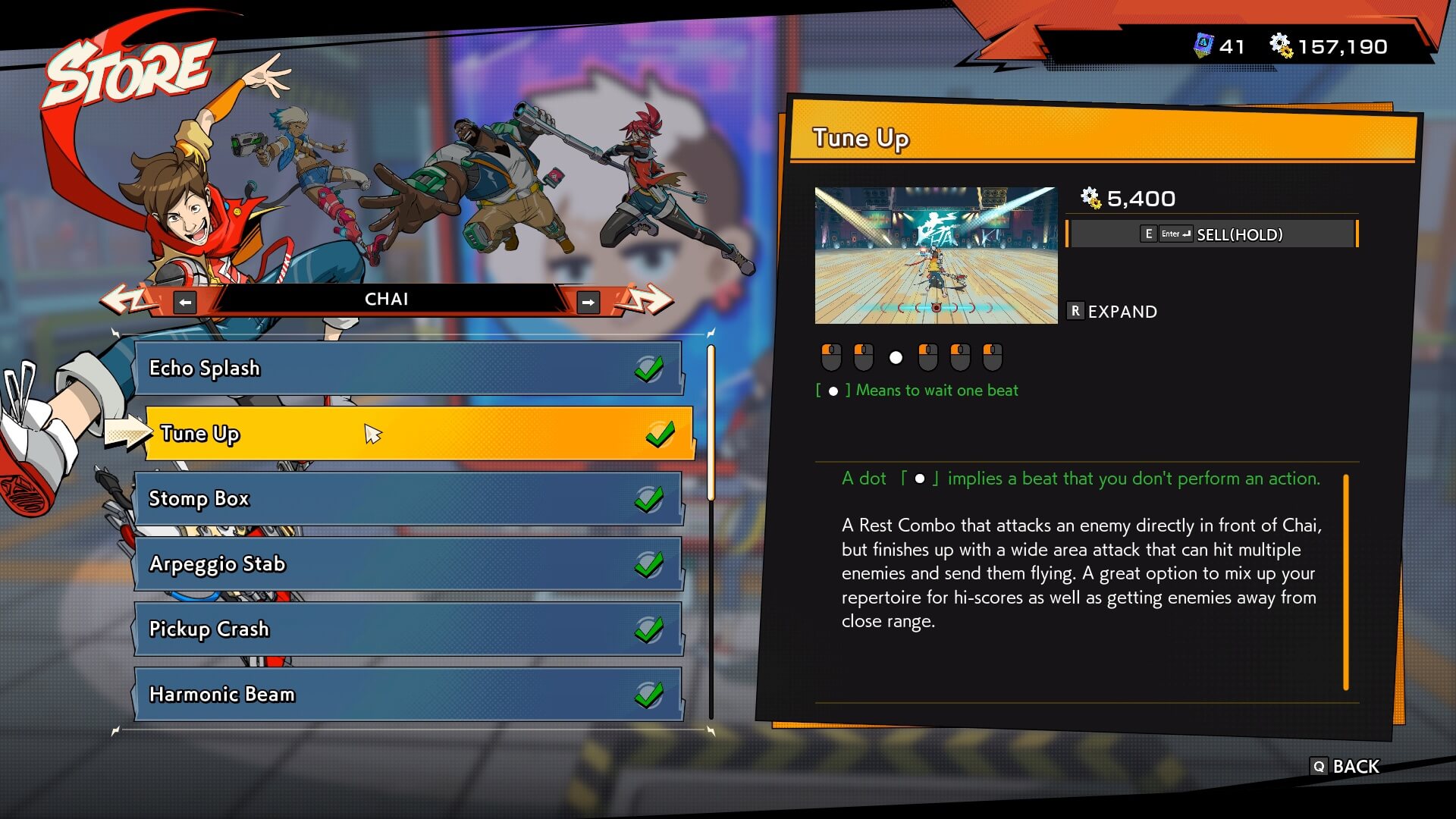
You have a robot cat named 808 who hovers next to you and pulses to the beat (the way it represents this pulse can be changed in the options). It essentially serves as a guide to the rhythm. If this is not enough you can also turn on-screen overlay that aims to help you see the beat. The game also offers a training mode when you’re at your hideout that allows you to practice combos and choose what enemies you practice against which is a nice addition.
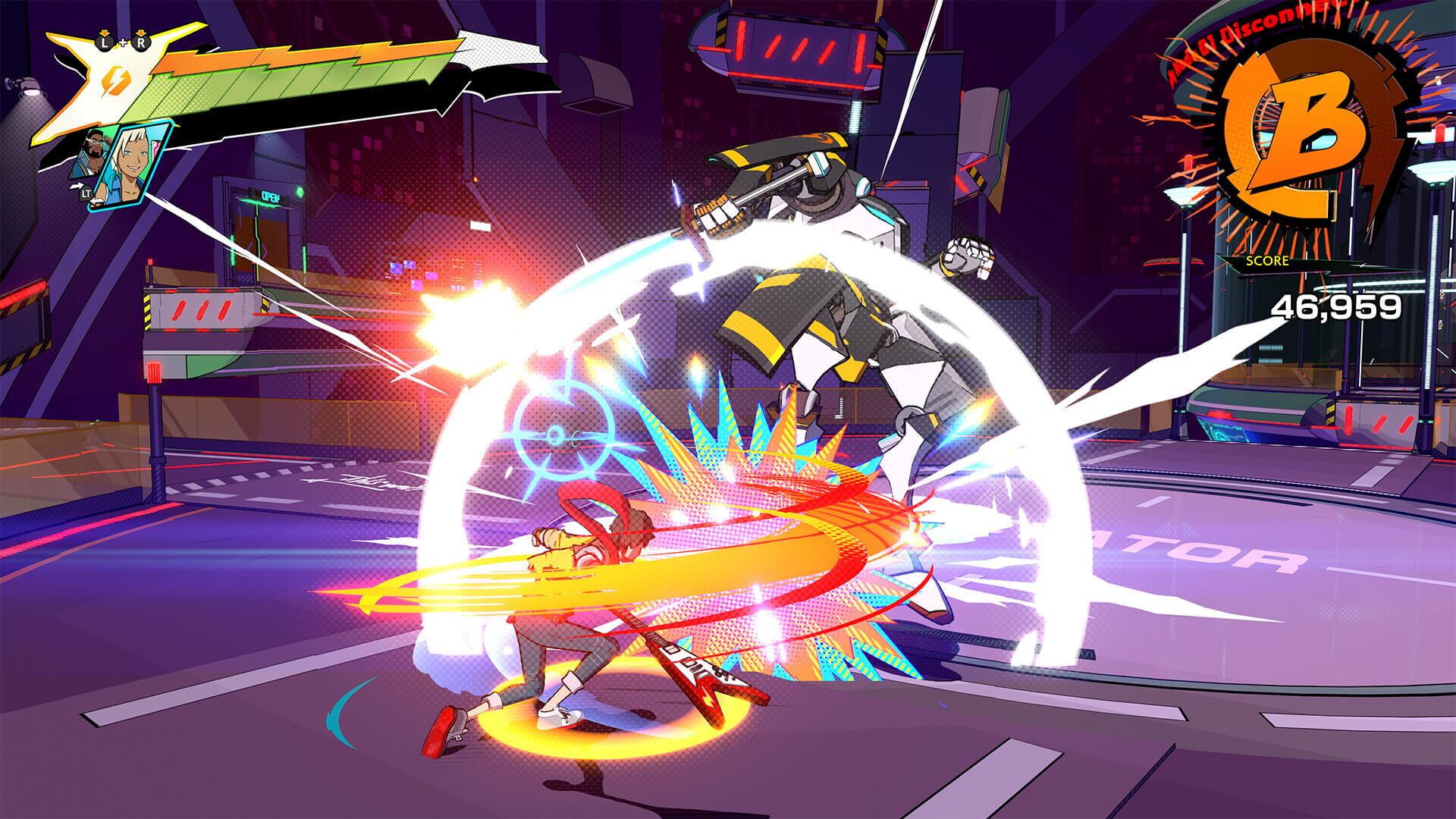
As far as enemies go, there is a variety of them that require different approaches and are introduced with good pacing as the game progresses. Certain enemies require you to summon specific companions in order for you to deal with them more effectively. The tougher enemies have some other mechanics as well. For example, they have super attacks that consist of a kind of parry minigame as well as a stun gauge that needs to be whittled down before they actually take any damage.
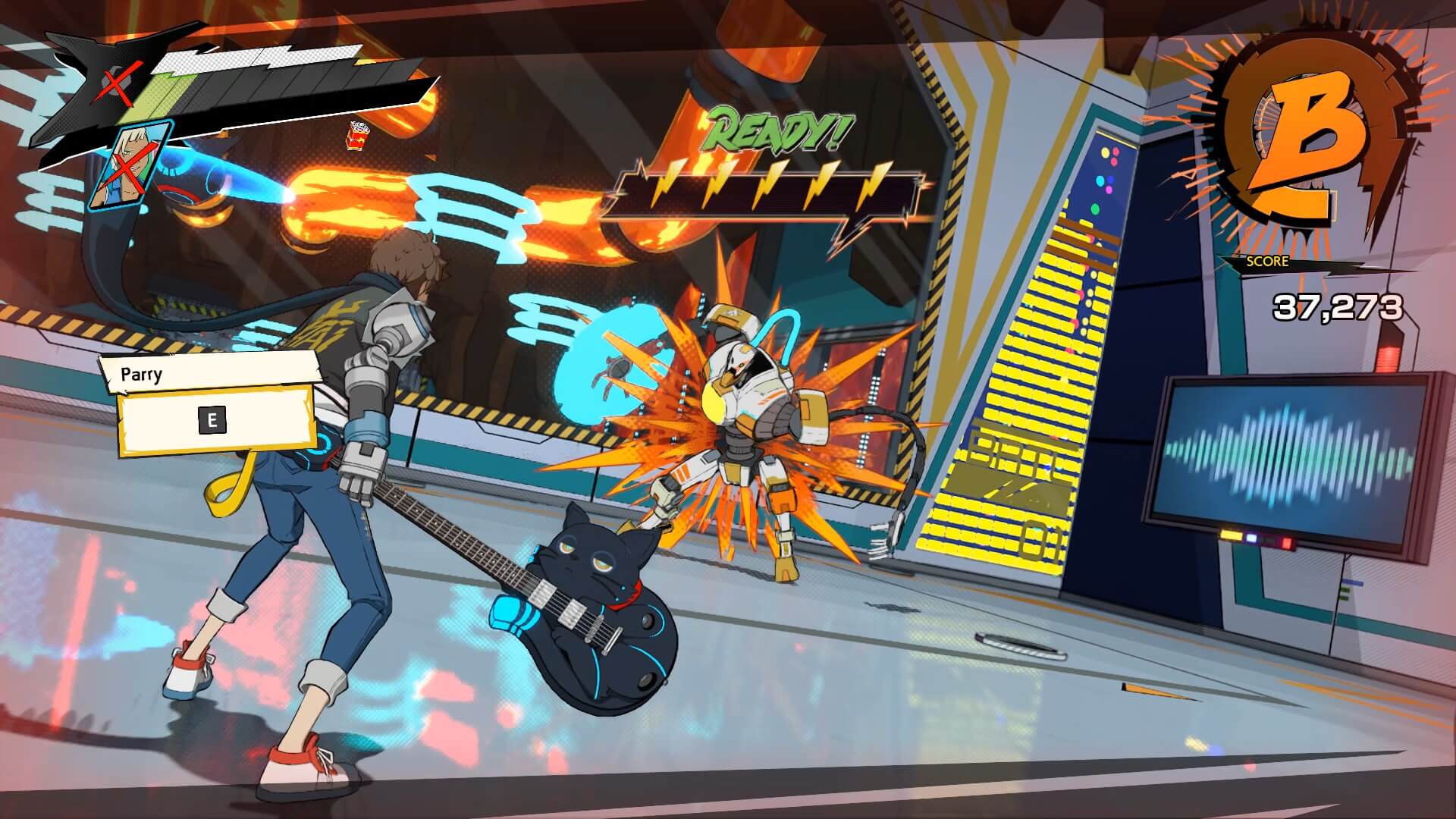
As you get further into the game, the fights get a little more complex, enemies will be mixed and matched requiring you to prioritize specific enemies, summon companions to deal with others, all the while parrying normal attacks, super moves, grappling around and dodging. It’s fast, frantic and incredibly fun, even if your timing isn’t great.
There are also several boss battles. While I’m not going to go into them since I consider that spoiler territory as well, they are all interesting and have unique mechanics.
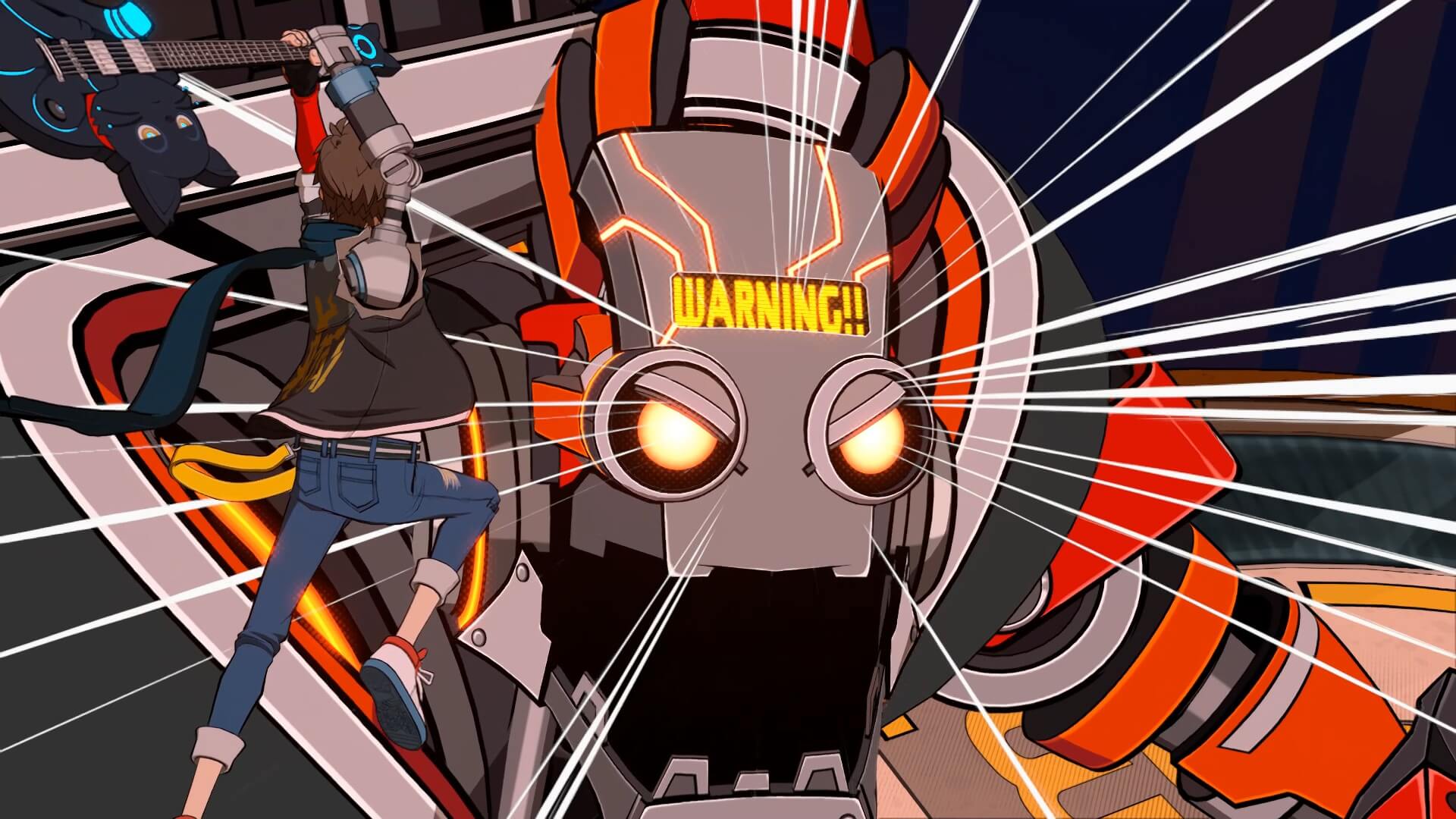
There are a total of 12 stages in the game as you make your way through the Vandelay Corporation. However, they are all linear, A to B affairs by design. Corridors, platforming sections and rooms where encounters occur, but there are hidden areas all over the place that contain various upgrades and bonus gears, so there is definitely an incentive to explore within the bounds of each of these levels.
You’ll want to collect as many gears as you can, since these allow you to buy new combos for both you and your companions as well as new special abilities. In addition to gears, there are also Life Gauge Meter pieces and Reverb Core Pieces scattered around each stage (4 of which are required to upgrade the size of your health bar/reverb bar respectively), and finally, Armstrong circuits which are needed along with gears to buy the mods I mentioned earlier.
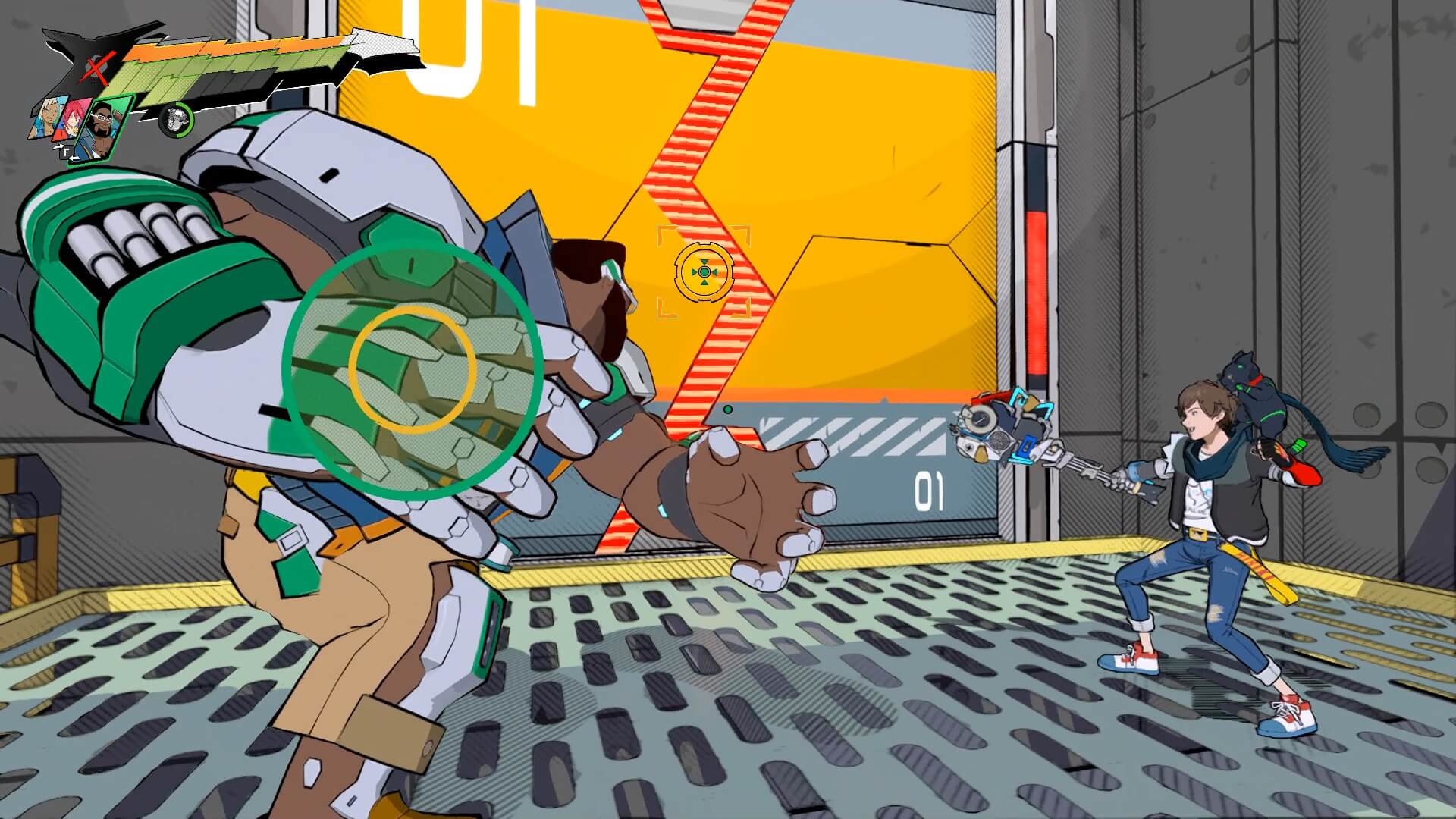
On your first playthrough, a number of areas will be blocked by obstacles that require certain companions in order to access, which essentially means that you will need to finish the game before getting access to these areas, and also the hidden “Spectra” doors on each stage that are story related. The companion-locked areas offer more gears and upgrades, and the Spectra doors, at least from the ones I’ve done so far, seem to be challenge rooms that require you to perform specific actions in combat against a specific selection of enemies. After finishing the game, you keep your current gears, upgrades and unlocked combos and such. So if you want to dig more into the mystery of Spectra, or fully upgrade everything you’ll absolutely need to play it through the game again.
The game itself is not particularly difficult once you get your head around it, but needless to say, it will take some practice to master it in order to get those S-rank ratings. Regardless though, it remains engaging throughout, and if you want more of a challenge you can always increase the difficulty in the options.
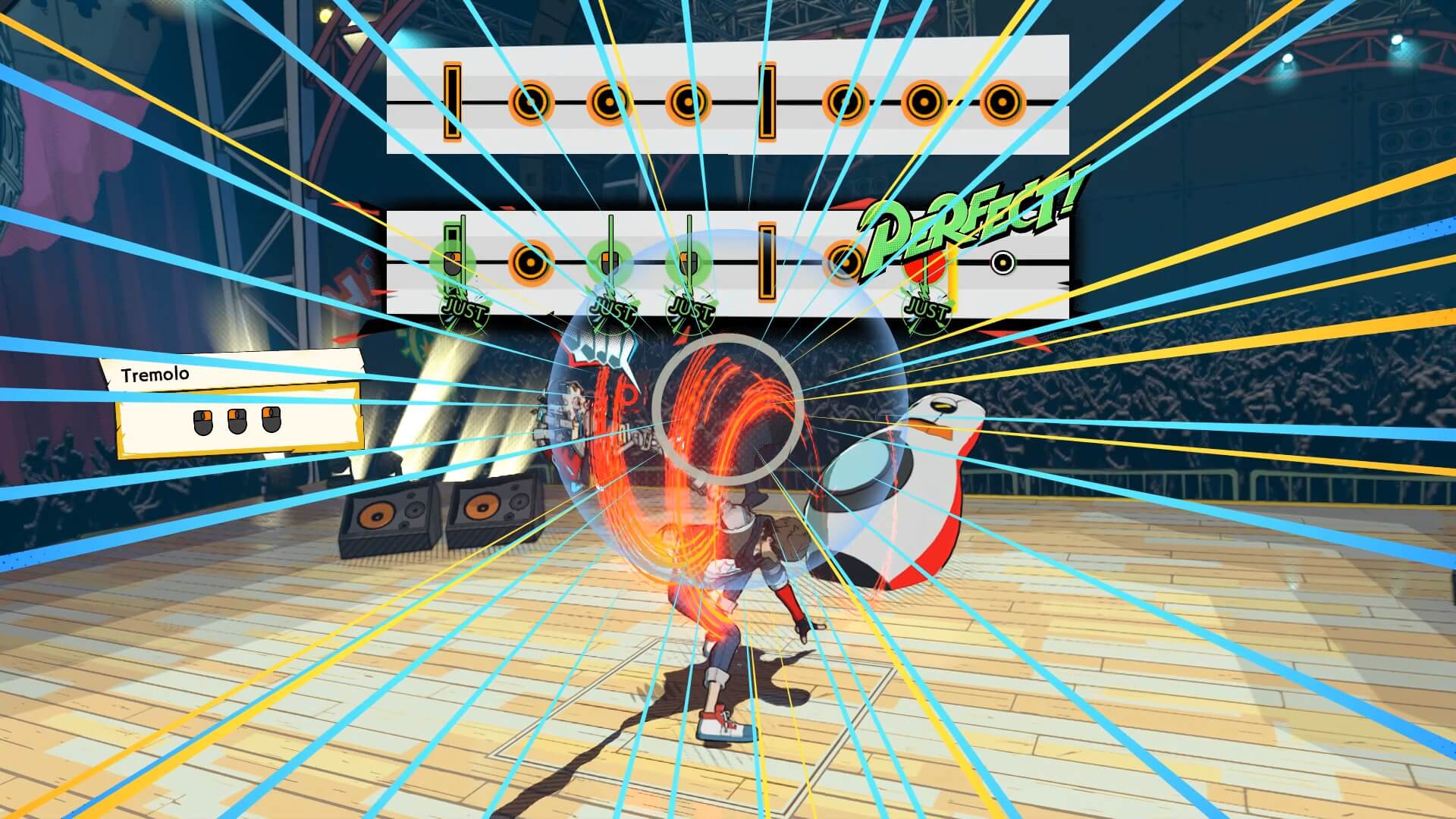
Issues
For those of you who have read my other reviews, you probably know that it’s incredibly rare for me to not have to talk about the multitude of technical issues in games at launch these days. Hi-Fi Rush is one of those exceptions. I didn’t experience a single crash, or notable bug in playthrough. I did have an instance where the frame rate suddenly locked to 60 despite having it set 144, but this only happened after I alt tabbed and then went back in, and it only happened once, despite me having done this several times without issue.
Outside of this game ran flawlessly for me, there were no stutters, hiccups or other anomalies. Hi-Fi Rush offers plenty of graphical options (including DLSS and FSR) to suit whatever system you are running on, as well as a plethora of accessibility options. Both the controller and mouse/keyboard worked perfectly fine for me, so as far as the PC port goes I really find fault here.
If I have to mention an issue, and I am nitpicking here now, it’s that cutscenes and in-game cutscenes are locked to 60fps (probably for animation reasons), and when playing at 144 or higher, the transitions to these cutscenes are noticeable. Finally, the in-game cutscenes/dialogue cannot be skipped. So there are some boss battle checkpoints and a few other places where if you die you‘ll need to sit through these every single time. It’s not really an issue for a first-time playthrough, but for subsequent playthroughs, it may become annoying.
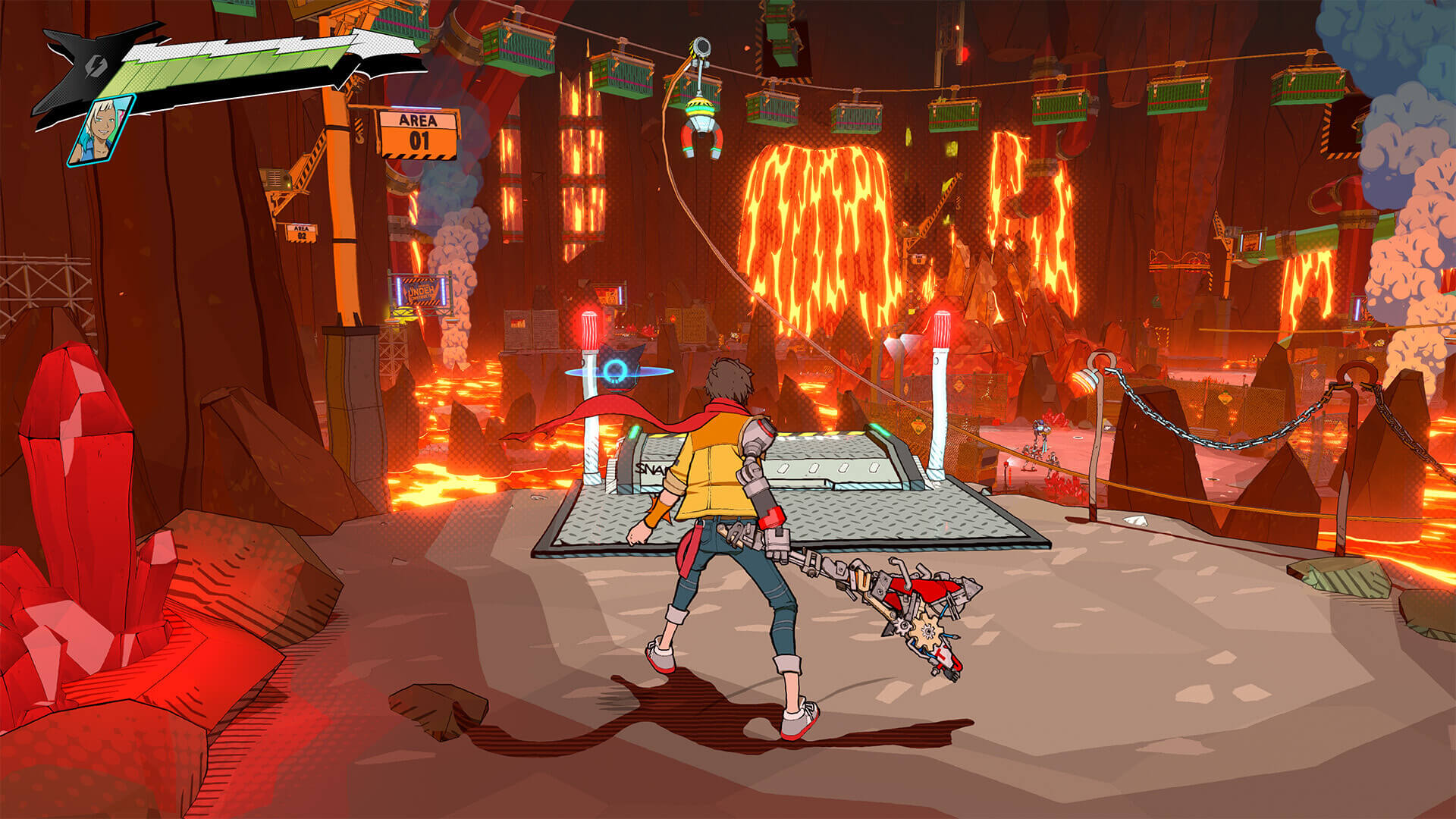
Conclusion
Hi-Fi Rush is a welcome breath of fresh air that came out of nowhere. The game is really fantastic, whether you like rhythm games or not. It’s an incredibly enjoyable and competent action brawler that’s fairly priced and well worth your time. It has no microtransactions either. It’s just an old-school game with great gameplay, that’s not trying to fit into what’s currently most popular, or just following some cookie-cutter formula. Tango Gameworks was willing to take a chance and make a game they thought would be fun and that the players would enjoy, you know, the way games used to be made. Other publishers and AAA developers should probably pay attention, and maybe even take some notes.
This is what happens when you focus on making an enjoyable game experience. If a game is good people will play it, it’s as simple as that. For those of you unwilling to part with €30, the game can also be found on Gamepass. At any rate, regardless of how you choose to play Hi-Fi Rush, I’d say without a doubt, it’s certainly worth your attention.
![]()
- Great aesthetic
- Very enjoyable gameplay
- Replayable
- Performance is great
- Price
- No microtransactions
![]()
- Cannot skip past in-game cutscene dialogue
- Cutscenes/in-game cutscenes locked at 60fp
Computer Specs:
Windows 10 64-bit computer using an Intel i7-12700k, 32GB Ram, and an nVidia RTX 3080 graphics card.
Stephen is our resident kung fu master and reviewer. When he’s not kung fu fighting, he’s playing games, and has been since the atari 2600. He also runs his own YouTube channel called Particular Pixels, where he creates a variety of content related to PC gaming. He goes by the nickname Shaoling (not to be confused with Shaolin), which comes from his favorite PC game of all time, System Shock 2.

